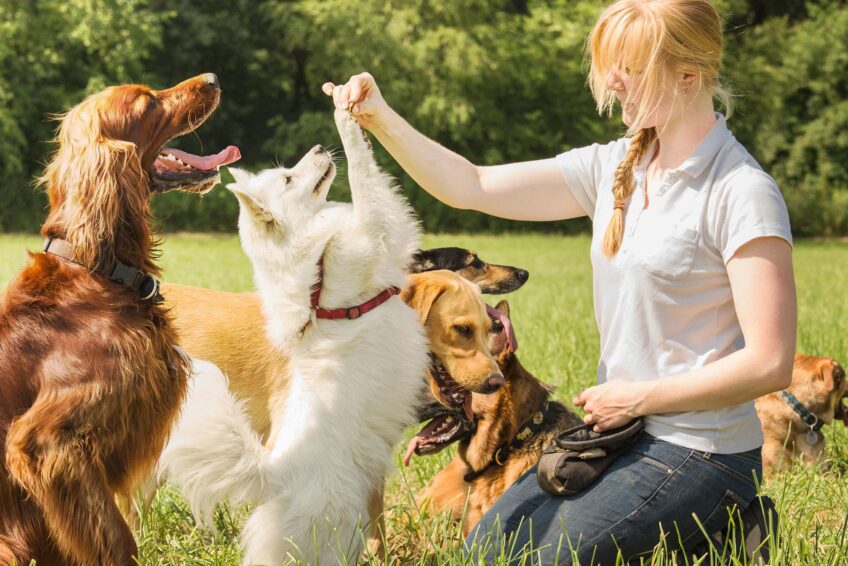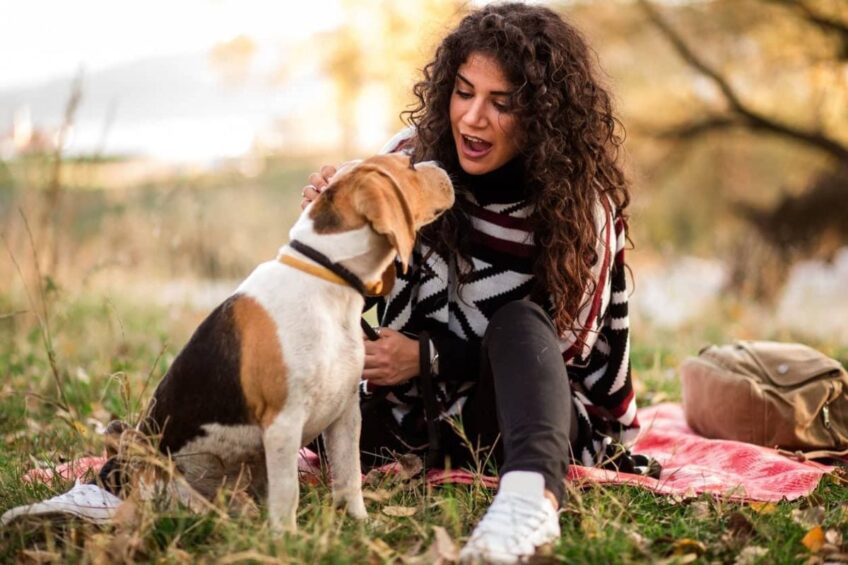Do you just like me and everyone else, sometimes wish our pets could talk too? I believe that what you would like most in the world is to be able to talk to your dog, who you already consider a member of the family. There are also owners who have taught their pets to mimic words and these videos are amazing and hilarious and have a lot of views on YouTube.
But even though this little furry friend cannot hold conversations with you at the level you desire, they are still very intelligent creatures and have the capacity to learn a large number of words and associate their meaning with an action, person or objects.
Dogs and Vocabulary: The Basics

Do you know how many words can make up a dog’s vocabulary? These cute pets have the capacity to learn about 150 to 200 words. This is an amazing fact that makes us feel wonderful and happy because now you too can devote time and teach your little friend a few tricks.
For an average dog to increase its vocabulary by so many words, you have to devote a large part of your free time and make an effort to achieve this goal. But today there are also specialized dog training programs, and the people who work there can do it for you, thecollarclubacademy.com is one of the academies and it is the right choice.
Many of you are probably wondering how long the training would be and whether your dog would be successful in building a vocabulary of at least the average number of words.
In order for a pet to successfully complete this type of learning and training and achieve its maximum in it, the final result will depend on several factors that we will discuss in more detail in this article.
We must note that in order for a dog to be able to learn more words than those commands that are used every day like: sit, go, yes, no, toy then his IQ is really at an enviable level and you need to continue working on his training.
But what could affect the speed with which this furball will learn as many words as possible and their meanings? It depends mainly on the following several factors:
Age
Although each dog has a unique learning style, they all have one thing in common. It is much easier to train a dog from an early age, while it is still a puppy, than when it is already older.
We can agree that when it comes to age and learning, they are quite similar to humans. While the child is young, we teach him to say words like mom and dad and many others, while for an adult, learning to speak is a more difficult task (take the example when learning new languages).
Therefore, if you have a small puppy, introduce the puppy to objects, places or people and their names right away.
Breed

This is the next factor that greatly contributes to the ability of your pet to learn quickly. If you’re at least a little familiar with the different types of dog breeds, you’ve probably noticed some of their distinguishing characteristics by now.
For example, on the list of some of the most intelligent dog breeds that have an incredible power to learn and are easy to train are border collies and German shepherds.
These pets can reach the maximum of words in the vocabulary and for this very reason they are used for police purposes or as companions for people with disabilities.
Their complete opposite are the huskies, which are simultaneously one of the smartest creatures but also the most stubborn. They will only let you teach them new words if they find the training fun and want to do it.
Learning method
Again, I would compare dogs to humans, but this is completely true, and pets like us like stimulation when they learn some new things that don’t mean much to them. They would just like to enjoy themselves, play, eat, sleep and that’s all the activities that make them happy.
To keep their attention while teaching them some difficult or key words, you must have their favorite snack with you. If they produce positive results, reward them to keep doing it.
Tone of voice or body posture

Although the trainers may have difficulties at first while getting the dog used to the intensive training, they still use some effective tools such as the right tone of voice or posture. It will be much easier for them to understand what you want to say if you use the correct tone or body posture.
They can tell very easily if you are happy (for example if your voice is high-pitched or your arms are open as if for a hug) or if you are angry (if you raise your voice or point your finger sternly at something). Use this method correctly for easier and faster learning.
Learning toys
Recently, learning toys have become popular, such as those buttons that are placed on the floor and make the sound of a word.
So, by pressing the button, the dog can communicate with you what it needs at the moment, whether it is hungry or thirsty, whether it wants you to let it out, whether someone is coming and so on. These toys are interesting for dogs and can make this process more interesting than it already is.
Conclusion

Remember, the journey of learning and growing together with our canine companions is far more rewarding than simply focusing on the number of words they can understand. The communication between our pet and us will not stop here, it will continue to evolve further.
Who knows what the future holds, and we will be ready together with our favorite furry friend. Will your best friend be willing and able to learn about 150 words and be in the group of average dogs, or will he succeed in distinguishing the maximum and be placed in the group of super dogs?
I hope this article helps you figure out where your dog belongs.

